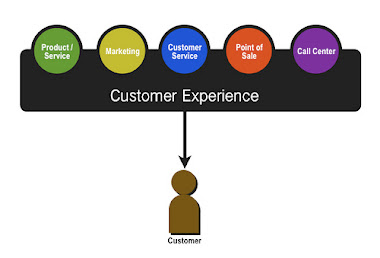7 Tips for Recovering from a Bad Customer Experie
As much as every business would love for each of its customers to have an excellent experience each time they do business with them, in the real world, that’s not always how it works. Even the best brands and businesses have customers who, from time to time, have a less-than-positive experience – for a variety of reasons. So, here are seven tips for how to recover when a customer has a bad experience with your business.
1) Address the Complaint Quickly
Today, a customer may complain at the time of service or wait to make a phone call or email the business. Whenever and however a customer contacts you about a negative customer experience, it’s important to resolve their issue directly and as quickly as possible, for a number of reasons. First, you want the customer to know you care about their business and want them to return, so being quick to resolve their problems helps them feel more positive about your company while they are most concerned about their experience. Also, quickly resolving customer issues is critical in helping keep negative reviews about your company from showing up online. That’s because often, customers turn to review sites, social media outlets, or even blogs to express their frustration about a bad customer experience. So, not only does quickly resolving their issues help make the customer happier – it can also help nip negative reviews in the bud, protecting your online reputation.
2) Identify the Root of their Complaint
When a customer complains about a bad experience, they may mention a variety of issues when they speak with you. They may wander off topic and also share about their overall bad day, or an awful experience with a competitor, or anything else that’s on their mind. But, it’s important to respectfully listen to what they have to say, paying careful attention to the specifics they mention pertaining to your business. Did you miss your appointment window? Were your products or services below the level of quality the customer anticipated? Were they overcharged for their purchase? Did your staff or partners provide poor customer service? There are many potential issues that can arise, but it’s important to identify the root of the problem so you can respond to their specific issue and not just offer a blanket response to any and all complaints.
3) Offer a Resolution Immediately
If a customer is unhappy with your products or services, try to solve their problem and make sure their anger is resolved as soon as you hear about it, before they ever leave your business or, for service companies, before you leave them. The longer it takes for their issue to be resolved, the more upset they are likely to become. To make sure you can consistently offer immediate resolutions to customer complaints, create a system, procedure, or policy for each of the different types of bad customer experiences your business has faced so that you’ll have a go-to way to handle issues as soon as they arise.
4) Take Responsibility for their Experience
Is every customer complaint your fault? Probably not, but it’s important to take responsibility for whatever contribution you have had in the issue. Don’t blame the customer, because that is likely only going to make them more upset. Instead, identify the parts of the issue that your business played a part in, and let the customer know you are aware of your responsibility in the matter.
5) Offer a Heartfelt Apology
Next, make sure to apologize for the customer’s bad experience. Be sincere and genuine, and stay professional in your response. Let the customer know you appreciate their business and are sorry for any inconvenience caused. Don’t be snarky, frustrated, or terse in your conversation with the customer. Instead, put yourself in their shoes and let them know you care. A heartfelt apology can go a long way in helping ameliorate any animosity the customer may have and in keeping a negative review at bay.
6) Provide a Tangible Resolution
In most cases, an apology alone, while nice, is not enough to truly recover from a bad customer experience. In order to fully resolve the issue with the customer, it’s usually best to offer a tangible resolution. For example, many businesses offer a discount, refund, or complimentary future product or service package, depending on the severity of the issue. If your business has caused harm to a customer or their property in some way, you may need to seek expert counsel on how to resolve the issue to avoid potential legal action.
7) Empower Your Team to Resolve Bad Experiences
“May I speak with a manager?” This is often one of the telltale questions that a customer has a complaint about your business. But often, the chain of command, authority, and approvals to get customer complaints resolved can make the process take more time and ultimately make the customer feel more frustrated instead of pleased at the outcome. So, to the best of your ability, empower your team to be a part of the complaint resolution process so that issues are handled at the front line instead of having to escalate them up for a true resolution. Of course, some situations are more severe than others, and due to the varying nature of customer complaints, they are ultimately handled on a case-by-case basis. But by getting your entire team trained on how to provide great customer service and finding consistent resolutions you can offer for the most common customer complaints, you can help reduce the number of customer complaints that you or your management has to deal with – and help ensure that your customers are happier as well.

No comments:
Post a Comment